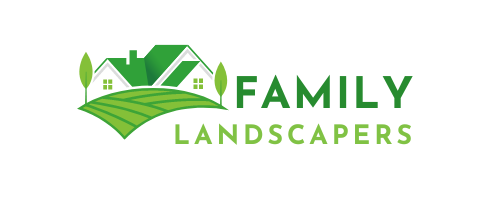
Are you looking for a way to add some zing to your life? Growing turmeric from the root can be an easy and rewarding activity that can bring flavor and health to your table. Not only is it a great addition to any meal, but it also has many health benefits associated with its consumption!
In this guide, you’ll learn how to easily grow your turmeric from the root so you can have a constant supply of this tasty and nutritious ingredient. From preparing the soil and planting the roots, to harvesting and storing the finished product, we’ll take you through each step so you can get started on your journey toward growing fantastic turmeric. So let’s get started!
Benefits of Growing Turmeric From Root
Growing turmeric from the root is an easy and rewarding experience that can have many health benefits. The spice has a unique flavor and aroma and can be used in many dishes to add a bit of zing. It has medicinal properties, which are believed to help with inflammation, digestive issues, and joint pain.
In addition to the health benefits, you will also get the satisfaction of having grown it yourself! Growing turmeric from the root is easy – all you need is some fresh rhizomes or roots (which can be purchased at most health food stores), warm soil, and partial shade.
Plant your turmeric rhizomes in damp soil and keep them moist throughout their growth. Once harvested, store it in an airtight container so you can enjoy its flavor for months to come!
Preparing the Soil

Preparing your soil for growing turmeric is an important part of ensuring a successful harvest. Turmeric likes warm climates and partial shade, so make sure to plant it in a spot with plenty of sunlight but also some protection from the elements.
Use organic matter such as compost or aged manure to enrich and nourish the soil. Test the pH level of your soil and add lime if needed to ensure that it is between 6-7.5 for optimal growth. Keep the soil moist but not too wet throughout the growing process.
Make sure no weeds or other plants are competing for resources in your chosen planting area to ensure that your turmeric rhizomes have enough space and nutrients to grow!
Planting Turmeric Roots

Planting turmeric roots is a fun and rewarding way to grow your organic turmeric powder. To begin, you’ll need fresh turmeric rhizomes or roots that can be purchased at health food stores or online. Plant the rhizomes in the moist soil with their pointed ends facing up.
Space them 2-3 inches apart and cover them with 1-2 inches of soil. Turmeric prefers warmer climates but can also thrive in temperate climates if given enough sun and protection from harsh winds.
For best results, choose a spot that gets plenty of sunshine but also has some partial shade available. With proper care, your plants should produce new leaves within a few weeks and be ready for harvest 6-8 months later!
Caring for Your Turmeric Plants During Growth

Caring for your turmeric plants during growth is essential if you want to enjoy the health benefits of this wonderful root crop. As a tropical plant, turmeric needs plenty of heat and moisture to thrive. Water the plants regularly, ensuring that the soil stays moist but not overly wet.
Give them plenty of suns but provide some partial shade in warmer climates so they don’t get too much direct sunlight. Add organic matter such as compost or manure to enrich the soil around your plants and help them grow strong and healthy.
For best results, avoid using chemical fertilizers or pesticides on your turmeric plants. When harvest time arrives, take care when harvesting your turmeric roots and leaves by hand, making sure to store any unused rhizomes in an airtight container until you’re ready to use them or turn them into Indian saffron or fresh turmeric powder.
Water Requirements
Turmeric is a tropical plant that requires plenty of moisture to thrive. As such, water requirements should be carefully monitored and kept consistent. The soil should be kept damp but not overly wet, as too much water can lead to root rot or other problems.
It’s also important to keep in mind that turmeric plants prefer warm climates, so cooler temperatures may require more frequent watering. Additionally, adding organic matter such as compost or manure helps to retain moisture and provide essential nutrients for the plant’s growth.
Finally, be sure to allow adequate drainage so that the roots don’t become waterlogged. With proper care and attention, your turmeric plants will reward you with an abundant harvest of fresh rhizomes and root rot wont occurs,
Light Requirements

Turmeric plants require bright, indirect light to grow and thrive. As tropical plants, they need at least 6 hours of sunlight per day to produce healthy rhizomes and leaves. If you live in a temperate climate or if your home doesn’t get enough sun, you can supplement natural light with artificial lighting such as fluorescent bulbs.
Additionally, it’s best to place the plants in an area where they will receive partial shade during the hottest parts of the day. This helps to prevent the leaves from scorching and will help ensure that your turmeric gets all the sunlight it needs!
Adding Organic Matter to the Soil
Adding organic matter to the soil is essential for growing turmeric. Organic matter helps improve drainage and aeration, increases water absorption, and adds vital nutrients to the soil. It’s best to use compost or aged manure before planting turmeric rhizomes to give them the best chance of success.
Additionally, you can mix in other types of organic matter such as peat moss or coco coir which will help retain moisture and reduce evaporation during hot weather.
For optimal growth, make sure to mix generous amounts of organic matter into the soil at least six inches deep and be sure that it’s evenly distributed throughout the area where you will be planting your turmeric rhizomes. After adding organic matter to the soil, be sure to water it thoroughly so that all of the nutrients are absorbed by the roots.
Harvesting and Storing your Turmeric

Harvesting and storing your turmeric is an important part of the process when growing it from the root. Turmeric can be harvested anytime after the roots are at least a few inches long, usually around 3-4 months after planting.
During harvest time, dig down and carefully pull out the rhizomes being careful not to damage any of them. Once you’ve collected all of the rhizomes, you can store them in an airtight container or plastic bag that is kept in a cool, dry place.
To make your turmeric powder, use a food processor or coffee grinder to grind up the fresh turmeric root until it’s a fine powder. Store your freshly made turmeric powder in an airtight container away from direct sunlight and moisture. This will ensure that it stays fresh for months!
Conclusion
The cultivation of turmeric is a rewarding experience that can provide you with an abundance of fresh, organic turmeric root. By following the steps outlined in this guide, you will be able to successfully grow your own turmeric plants and reap the benefits of their medicinal properties. Planting turmeric rhizomes in moist soil in a warm climate or indoors with partial shade and plenty of organic matter will ensure the success of your crop.
Harvest time for turmeric is typically 8-10 months after planting. Once harvested, store the roots in an airtight container and keep them away from direct sunlight. Fresh turmeric root can also be found at health food stores or purchased online as Indian saffron or powder. Whatever method you choose to get your hands on some fresh turmeric root, its health benefits are sure to make it worth it!






